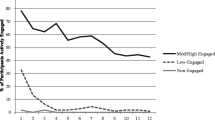Abstract
The purpose of this study is to improve comprehension about how adolescents and young adults (AYA) diagnosed with cancer use the Internet and social networks to seek information about their illness and to establish relationships between them. A group of 20 AYA patients and survivors of cancer (ages 14 to 29) were interviewed from a qualitative approach. Most of the respondents (N = 16) sought information about their disease on the Internet. They looked for information using search engines (mainly Google) and general concepts as their own cancer name. In general, they did not share the information obtained with their parents or professional healthcare providers. The interviewees think that the information is difficult to understand because of jargon and that it is not aimed at a young audience. All (N = 20) have presence in social networking sites. AYAs with cancer are starting to create content themselves: three started a blog in order to explain their experience to others like them. The study shows that is necessary to increase efforts on adapting content to these age groups in order to help them learn more about their own disease. This may contribute to increment their adherence to treatment and to maintain surveillance of potential consequences and health problems post-treatment.


Similar content being viewed by others
References
Klimstra T, Beyers W, Besevegis E (2014) Personality dynamics in adolescence. J Adolesc 37(5):643–646
Yates S, Payne M, Dyson S (2009) Children and young people in hospitals: doing youth work in medical settings. J Youth Stud 12(1):77–92
Barr RD (2009) The adolescent with cancer. Eur J Cancer 37(12):1523–1527
Zebrack B (2011) Psychological, social, and behavioral issues for young adults with cancer. Cancer 117(S10):2289–2294
National Cancer Institute. A snapshot of adolescent and young adult cancers. NCI. 2014. Available from: http://www.cancer.gov/researchandfunding/snapshots/adolescent-young-adult
Gatta G, Zigon G, Capocaccia R, Coebergh JW et al (2009) Survival of european children and young adults with cancer diagnosed 1995-2002. Eur J Cancer 45:992–1005
Bleyer A, Barr R, Hayes-Lattin B et al (2008) The distinctive biology of cancer in adolescents and young adults. Nat Rev Cancer 8:288–298
Lee C, Gray SW, Lewis N (2010) Internet use leads cancer patients to be active health care consumers. Patient Educ Couns 8:S63–S69
A Lenhart, K Purcell, A Smith, K Zickuhr. Social media and mobile internet use among teens and young adults [Internet]. Pew Internet. 2010. Accessed 11 October 2014 from: http://www.pewinternet.org/2010/02/03/social-media-and-young-adults
Gage EA, Panagakis C (2012) The devil you know: parents seeking information online for paediatric cancer. Sociol Health Ill 34(3):444–458
Coulson NS, Greenwood N (2012) Families affected by childhood cancer: an analysis of the provision of social support within online support groups. Child Care Health Dev 38(6):870–877
Hargrave DR, Hargrave UA, Bouffet E (2006) Quality of health information on the internet in pediatric neuro-oncology. Neuro Oncol 8(2):175–182
Domínguez M, Sapiña L (2015) Pediatric cancer and the internet: exploring the gap in doctor-parents communication. J Cancer Educ 30:145–151
Lam CG, Roter DL, Cohen KJ (2013) Survey of quality, readability, and social reach of websites on osteosarcoma in adolescents. Patient Educ Couns 90(1):82–87
Stinson JN, Sung L, Gupta A et al (2012) Disease self-management needs of adolescents with cancer: perspectives of adolescents with cancer and their parents and healthcare providers. J Cancer Surviv 6:278–286
Schiffman JD, Csongradi E, Suzuki LK (2008) Internet use among adolescent and young adults (AYA) with cancer. Pediatr Blood Cancer 51(3):410–415
Handcock MS, Gile KJ (2011) Comment: on the concept of snowball sampling. Sociol Methodol 41(1):367–371
Bauer M, Gaskell G (2000) Qualitative researching with text, image and sound; a practical handbook. Sage, London
Hutchison AJ, Johnston LH, Breckon JD (2010) Using QSR-NVivo to facilitate the development of a grounded theory project: an account of a worked example. Int J Soc Res Methodol 13(4):283–302
Zebrack B, Walsh-Burke K (2005) Advocacy needs of adolescent and young adult cancer survivors. J Psychosoc Oncol 22(2):75–87
Zebrack B, Kent E, Keegan THM et al (2014) ‘Cancer sucks’ and other ponderings by adolescent and young adult cancer survivors. J Psychosoc Oncol 32(1):1–15
Kent EE, Smith AW, Keegan THM et al (2013) Talking about cancer and meeting peer survivors: social information needs of adolescents and young adults diagnosed with cancer. J Adolesc Young Adult Oncol 2:44–52
Mascarin M, Truccolo I, Byther E et al (2014) Cancer, adolescence, and their peers: ‘they’ll give you a story’. J Cancer Educ 29:434–440
Maurice-Stam H, Scholten L, de Gee EA et al (2014) Feasibility of an online cognitive behavioral-based group intervention for adolescents treated for cancer: a pilot study. J Psychosoc Oncol 32(3):310–321
Treadgold CL, Kuperberg A (2010) Been there, done that, wrote the blog: the choices and challenges of supporting adolescents and young adults with cancer. J Clinic Oncol 28(32):4842–4849
Acknowledgements
Research Project “The Language and Culture of Health” (CS02014-61928-EXP).
Author information
Authors and Affiliations
Corresponding author
Rights and permissions
About this article
Cite this article
Domínguez, M., Sapiña, L. “Others Like Me”. An Approach to the Use of the Internet and Social Networks in Adolescents and Young Adults Diagnosed with Cancer. J Canc Educ 32, 885–891 (2017). https://doi.org/10.1007/s13187-016-1055-9
Published:
Issue Date:
DOI: https://doi.org/10.1007/s13187-016-1055-9




